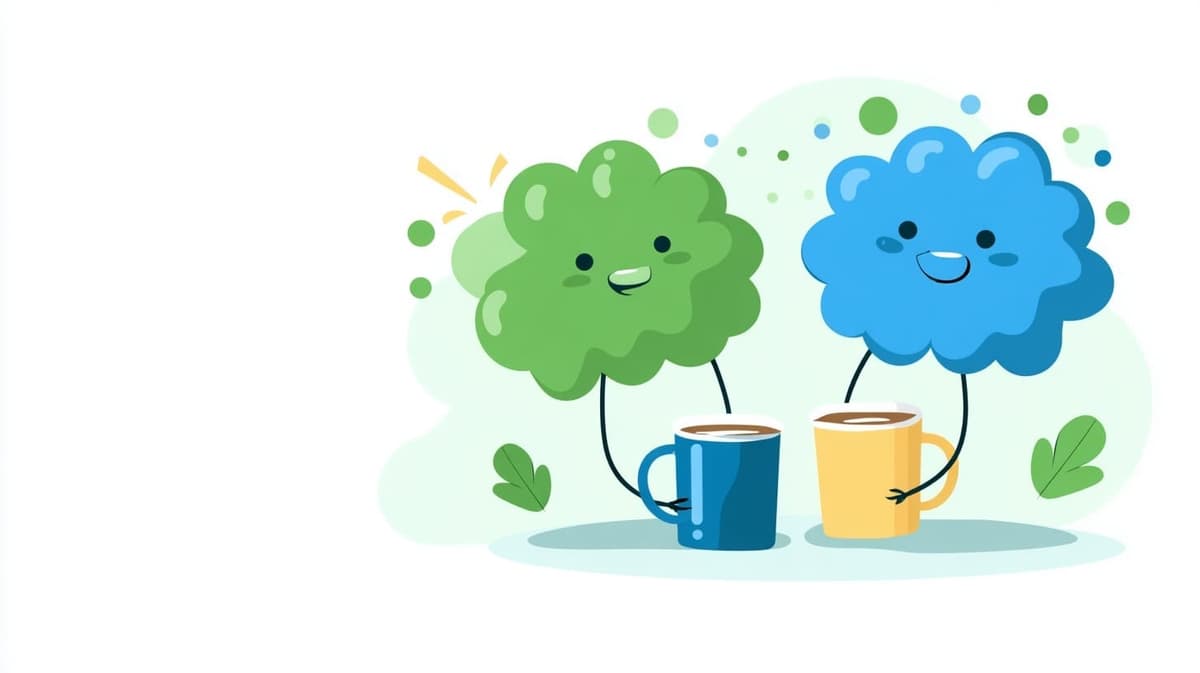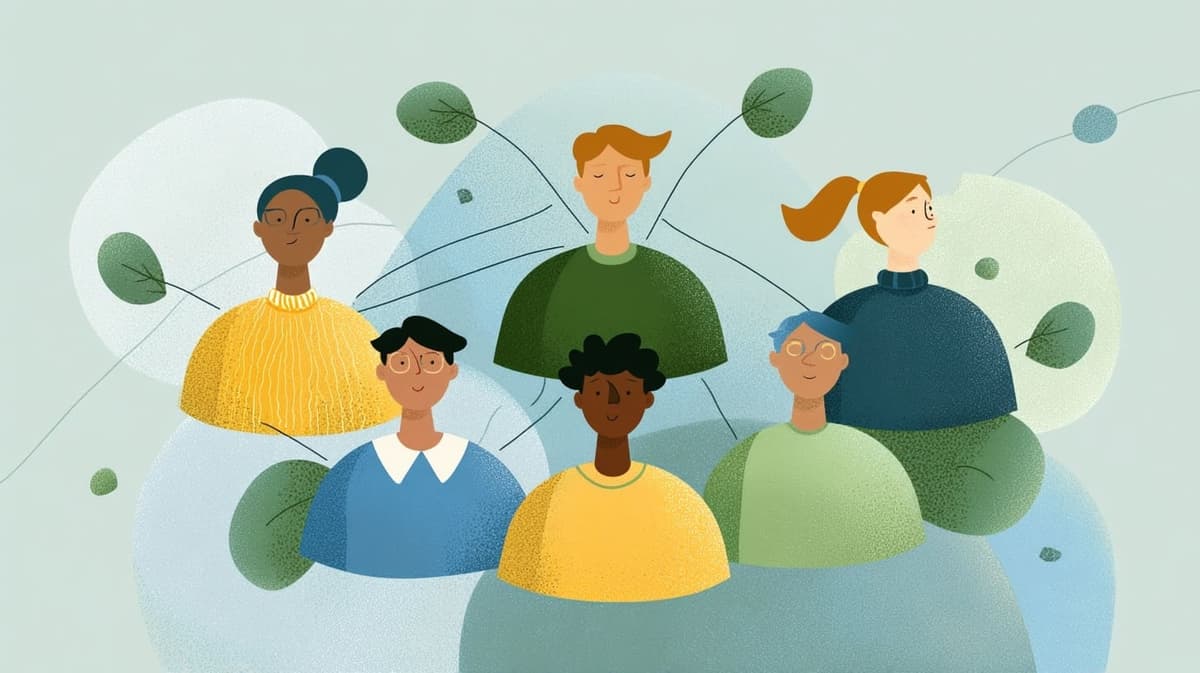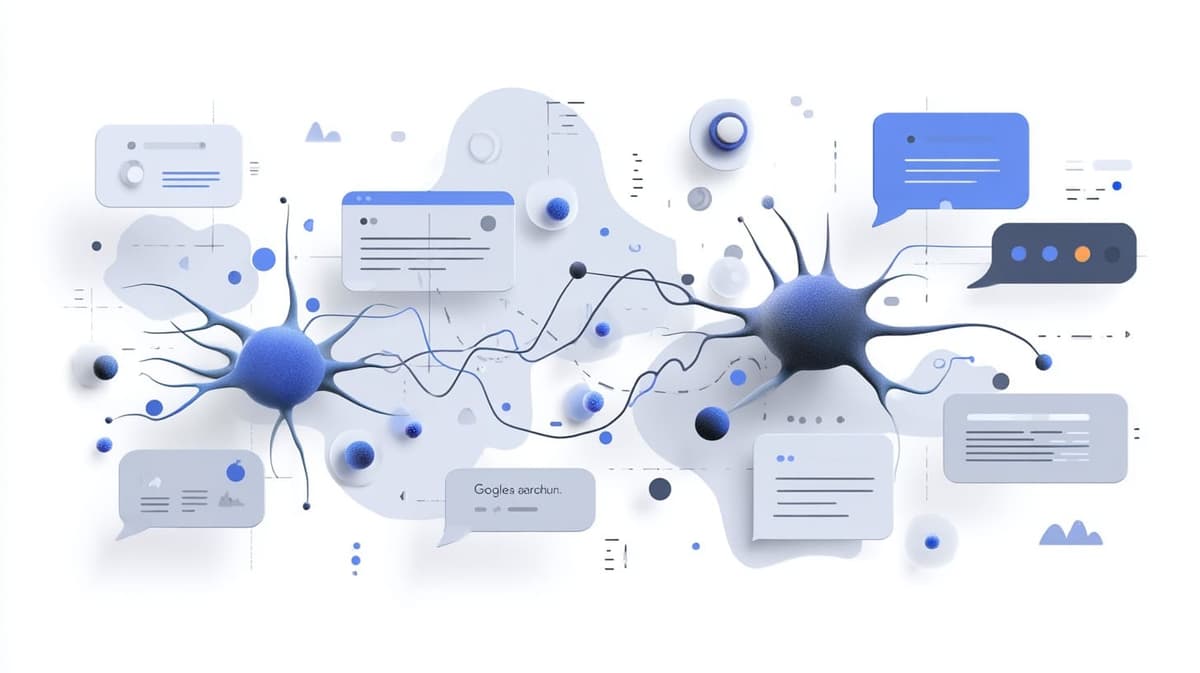
Google Bard for Brainstorming Sessions
Picture this: you're staring at a blank whiteboard, marker in hand, waiting for that spark of inspiration to hit. We've all been there—that moment when you need fresh ideas but your brain feels like it's running on dial-up internet. Enter Google Bard, your new brainstorming buddy who never runs out of coffee or creative energy.
Think of Bard as that colleague who always has interesting perspectives to share, except this one happens to be powered by Google's advanced AI and has access to the entire internet. Whether you're launching a startup, planning a marketing campaign, or trying to solve that tricky project challenge, Bard can help transform those solo brainstorming sessions from frustrating monologues into dynamic conversations.
What Makes Google Bard Perfect for Brainstorming

Google Bard isn't just another chatbot—it's a conversational AI that's specifically designed to think alongside you. Built on Google's PaLM 2 architecture with 540 billion parameters (that's a lot of digital neurons), Bard understands context, remembers what you've discussed, and can pivot between ideas as naturally as a human brainstorming partner.
Here's what makes Bard particularly brilliant for idea generation:
Real-time information access: Unlike AI models stuck in the past, Bard taps into Google's live search data, meaning your brainstorming sessions include the latest trends, news, and market insights. No more wondering if that "revolutionary" idea already exists—Bard can tell you what's happening right now.
Conversational flow: Bard remembers your conversation thread, so you can build on ideas organically. Start with "I need marketing ideas for eco-friendly products" and watch as the conversation naturally evolves into specific campaign strategies, target audiences, and even potential partnerships.
Multiple perspective generation: Ask Bard to approach your challenge from different angles—as a customer, competitor, or industry expert. It's like having multiple brainstorming partners with different expertise areas, all rolled into one.
Getting Started with Bard for Brainstorming

Setting Up Your Session 🎯
Before diving into your first brainstorming session with Bard, take a moment to set the stage. Just like preparing for an in-person brainstorming meeting, a little preparation goes a long way.
Start by visiting bard.google.com and signing in with your Google account. The interface is refreshingly simple—just a chat box waiting for your ideas. But here's the key: don't just jump in with "give me ideas." Instead, give Bard some context about what you're trying to achieve.
Frame your challenge clearly: Instead of "I need business ideas," try "I'm looking to start a business that helps remote workers stay productive while traveling. I have a $10,000 budget and experience in software development."
Set parameters: Let Bard know any constraints or requirements upfront. Are you targeting a specific demographic? Working within budget limits? Need ideas that can be implemented quickly? The more context you provide, the more tailored and useful Bard's suggestions will be.
Crafting Effective Brainstorming Prompts
The secret to productive brainstorming with Bard lies in how you ask questions. Research shows that open-ended questions generate more creative responses, so ditch the yes/no queries and embrace curiosity.
Instead of: "Should I add a chat feature to my app?" Try: "What are five different ways I could improve communication between users in my fitness app?"
Instead of: "Is video marketing good?" Try: "How could a small bakery use video content to connect with their local community and increase sales?"
Here are some proven prompt structures that work particularly well:
- The perspective shift: "If you were a busy parent trying to eat healthier, what would frustrate you most about current meal planning apps?"
- The constraint challenge: "What are ten creative ways to market a new product with only social media and a $500 budget?"
- The future scenario: "Imagine it's 2030 and remote work is even more common. What services would digital nomads desperately need?"
Real-World Brainstorming Applications

Business Strategy and Product Development
Companies are increasingly using AI for strategic planning, and Bard excels at helping you think through complex business challenges. Let's say you're developing a new mobile app. You could start with:
"I'm creating a meditation app for college students. Help me brainstorm features that would specifically address the stress and time constraints this demographic faces."
Bard might suggest features like:
- Study break meditation timers that sync with class schedules
- Stress-level tracking during exam periods
- Group meditation sessions for study groups
- Quick 2-minute breathing exercises between classes
But here's where it gets interesting—you can then dig deeper: "How would the group meditation feature actually work technically?" or "What would make students choose this over existing meditation apps?"
Content Creation and Marketing
Content creators are finding Bard particularly valuable for breaking through creative blocks. Instead of staring at a blank page wondering what to write about, you can have a conversation about your audience's needs and interests.
For example: "I run a YouTube channel about sustainable living. My audience is mostly millennials interested in reducing their environmental impact but worried about the cost. What are some video ideas that would be both helpful and engaging?"
Bard might suggest:
- "30-day challenges" showing real costs and savings of sustainable swaps
- Interviews with people who've dramatically reduced their carbon footprint on a budget
- DIY videos for making eco-friendly products at home
- "Sustainable vs. regular" comparison videos with honest cost breakdowns
The beauty is that you can immediately follow up with questions like "What would make the 30-day challenge format unique?" or "How could I structure the DIY videos to be most helpful?"
Problem-Solving and Innovation
Some of the most exciting brainstorming happens when you present Bard with a specific problem and ask it to think creatively about solutions. This approach has led to innovative solutions across industries.
Try framing challenges like: "Small restaurants are struggling to compete with delivery apps that charge high fees. What are some creative ways a local restaurant could build direct customer relationships and reduce dependence on these platforms?"
Bard might explore solutions like:
- Subscription-based meal programs for regular customers
- Community event hosting to build local loyalty
- Collaborative delivery systems with other local businesses
- Customer referral programs with meaningful rewards
Each suggestion can then be explored further: "How would the subscription meal program work logistically?" or "What types of community events would work best for different restaurant styles?"
Advanced Brainstorming Techniques
The Iterative Refinement Method
Once Bard gives you initial ideas, the real magic happens in the follow-up. This is where many people miss out—they take the first response and run with it, instead of using it as a starting point for deeper exploration.
Let's say Bard suggests "creating a loyalty program" for your business. Don't stop there. Ask:
- "What would make this loyalty program different from what competitors offer?"
- "How could we make the program feel more like a community than a transaction?"
- "What would be the most surprising reward we could offer that would still be profitable?"
Each answer opens new avenues for exploration and often leads to more innovative solutions than the original suggestion.
Role-Playing Different Perspectives
One of Bard's superpowers is its ability to adopt different viewpoints. You can ask it to brainstorm from the perspective of different stakeholders:
- "Now approach this same challenge from the perspective of a skeptical customer"
- "What would a competitor think about this idea?"
- "How would someone with a disability interact with this product?"
- "What concerns would a parent have about this service?"
This technique often reveals blind spots and leads to more inclusive, well-rounded solutions.
The "What If" Exploration
Push Bard to explore extreme scenarios or unusual constraints. These conversations often generate the most creative ideas:
- "What if we had to solve this problem without using any technology?"
- "What if our target customer was the opposite of who we usually serve?"
- "What if we had unlimited budget versus what if we had no budget at all?"
These hypothetical scenarios can reveal innovative approaches you might never have considered otherwise.
Navigating Bard's Limitations
While Bard is an incredible brainstorming partner, it's important to understand its current limitations so you can work with them rather than against them.
The Single Response Challenge
Unlike human brainstorming sessions where ideas bounce around rapidly, Bard operates on a one-response-per-request model. This means you need to be strategic about follow-up questions to maintain momentum.
Instead of expecting a flood of ideas in one response, structure your session as a series of focused questions. This actually works to your advantage—it forces you to really consider each suggestion before moving on to the next.
Accuracy and Verification
Remember that Bard is still learning and can occasionally provide inaccurate information, especially about niche topics. Always verify important facts or statistics that come up during brainstorming, particularly if you're planning to act on them.
For brainstorming purposes, this limitation is less critical since you're generating ideas rather than seeking definitive answers. But it's good practice to fact-check any specific claims or data points before moving forward with implementation.
The Generic Response Trap
Sometimes Bard's responses can feel generic, especially if your prompts are too broad. Combat this by being specific about your context, constraints, and goals. The more unique information you provide, the more tailored and useful Bard's suggestions will be.
Maximizing Your Brainstorming Success
Prepare Your Context
Before starting your session, jot down key information about your challenge:
- What specifically are you trying to achieve?
- Who is your target audience?
- What constraints do you have (budget, time, resources)?
- What has already been tried?
- What would success look like?
Having this information ready helps you provide rich context in your prompts, leading to more relevant and actionable ideas.
Document and Organize
Keep a separate document open while brainstorming with Bard. Copy the most promising ideas and add your own notes about implementation, concerns, or follow-up questions. This prevents good ideas from getting lost in the conversation flow and helps you see patterns or themes emerging.
Combine AI Insights with Human Intuition
Bard can generate ideas and provide different perspectives, but you bring irreplaceable human elements: intuition about your market, understanding of your team's capabilities, and gut feelings about what will resonate with your audience. The best brainstorming sessions happen when you combine Bard's analytical capabilities with your human insights.
Looking Ahead: The Future of AI-Assisted Brainstorming
As Google continues developing Bard (now transitioning to the Gemini ecosystem), we can expect even more sophisticated brainstorming capabilities. Future updates may include better visual brainstorming tools, integration with Google Workspace for collaborative sessions, and more nuanced understanding of creative processes.
The key is to start experimenting now. The more you practice brainstorming with AI, the better you'll become at asking the right questions and recognizing valuable insights when they emerge.
Your Next Brainstorming Session
Ready to transform your next brainstorming session? Start with a challenge you're currently facing—whether it's a work project, personal goal, or creative endeavor. Head over to Bard, provide some context, and ask an open-ended question about possible approaches.
Remember, the goal isn't to find the perfect solution in one conversation. It's to generate possibilities you might not have considered, explore different angles, and push your thinking in new directions. Some of your best ideas might come not from Bard's direct suggestions, but from the thoughts those suggestions spark in your own mind.
The future of brainstorming isn't human versus AI—it's human with AI, combining the best of both worlds to generate ideas that neither could create alone. Your next breakthrough idea might be just one conversation away.